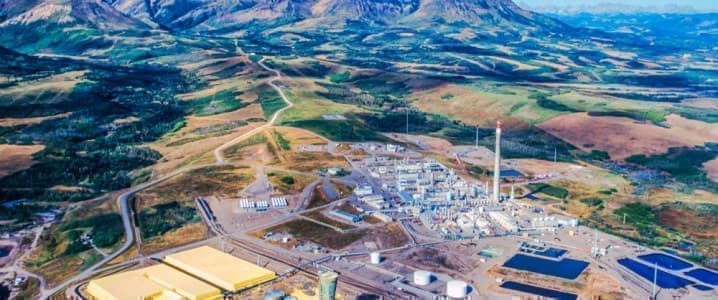Canada has long relied on its oil sands to support its energy security and bring in revenue for the major oil-producing province of Alberta. Oil sands are known as one of the most polluting forms of crude, meaning the Canadian government has faced repeated calls to cut production to support the country’s climate aims and reduce its impact on the environment. However, Alberta has lobbied hard to ensure production continues, and with the energy shortages faced in 2022, Prime Minister Justin Trudeau has responded to international pleas to continue oil production. Now, Trudeau is aiming to massively reduce the carbon footprint of Canada’s oil sands through investment in carbon capture and storage (CCS) technology, but many believe this is an insufficient response to polluting oil sands operations and highly contradictory to the country’s climate goals.
Oil sands continue to be one of the world’s most carbon-intensive, large-scale crude oil operations, producing around 31 percent more emissions than the average North-American crude from the point of extraction through its lifecycle to the point of end use, according to the Carnegie Endowment’s Oil-Climate Index. It is extremely energy intensive to extract and process oil sands barrels to achieve usable crude. Yet Alberta continues to rely heavily on its oil sands operations to support the province’s jobs and revenue, having produced this type of crude since the 1960s. Despite repeated calls to curb production, to prevent further damage to the environment, Alberta has been strong on its stance to keep producing, and so far, Trudeau has let this continue.
But this month, Trudeau announced plans to invest billions in public investment in the cleaning up of operations. He hopes to achieve this by installing CCS technologies into oil operations to help capture the carbon emitted during the production of the crude. Trudeau is trying to both support a major economic sector –while oil demand remains high, as well as achieve his ambitious climate targets, such as net-zero carbon emissions by 2050. The Prime Minister has pledged $12.4 billion in tax credits for building carbon capture systems to date, including a large-scale project to reduce oil sands carbon emissions by 10 million metric tonnes by 2030.
By 2050, investments in Canada’s CCS technology are expected to help reduce carbon emissions by around 40 million metric tonnes a year, helping to support the continuation of the oil sands industry, which contributed 7 percent of the country’s economy and over a fifth of goods exported. The plan for CCS in the oil sands industry is for it to sequester carbon dioxide from the upgrader facilities that transform mined bitumen into lighter crude. The equipment will also extract CO2 from steam generators at well sites. This carbon will then be injected underground at a depth of around 1,000 metres into an aquifer – the Basal Cambrian Sandstone formation. Construction is expected to begin in 2026 for operations to start before the end of the decade. However, many scientists are suggesting that the efficacy of CCS technologies is highly overstated.
CCS methods have existed for decades, but following greater pressure to support a green transition, many energy companies and industries have invested in the research and development of enhanced, large-scale CCS systems in recent years. Many companies, particularly those working in heavy industry, are relying heavily on CCS as a means of decarbonisation in sectors that are very difficult to decarbonise. However, there have been several challenges to rolling out CCS tech on a wider scale, largely due to geological limitations major technical faults and prohibitive costs, meaning that many systems underperform in practice.
Moreover, in April 2023, a new federal investigation showed that the greenhouse gas emissions from Alberta’soil sands operations could be much higher than originally estimated, showing the dire need for political action. Researchers used new methods to measure emissions from the oil sands, resulting in a figure around 65 percent higher than those reported by the industry. The lead author of the report, Sumi Wren, stated: “We found that (emissions) are higher than the CO2 estimates that are reported in the greenhouse gas reporting program.” According to the report, oil sands could be producing around 32 million more tonnes of carbon dioxide a year than is being reported, with underreporting dating back to at least 2018.
The CCS approach to Canadian oil seems to go against Trudeau’s liberal policy agenda and is extremely high risk. Not only is he unlikely to garner the favour of the conservative province of Alberta, but he could risk alienating his liberal following, many of whom are concerned about climate change. While there are high hopes for CCS technologies in hard-to-decarbonise industries, most agree that this is not a long-term solution to addressing the environmental impact of oil operations, particularly the most-polluting kind.
By Felicity Bradstock for Oilprice.com
More Top Reads From Oilprice.com:
- General Motors Adopts Tesla’s Charging Technology
- Armenia And Azerbaijan Make Strides Towards Peace
- China’s Gold Buying Spree Continues For Seventh Consecutive Month



















Therefore, it is sheer madness for anyone to suggest cutting sand oil production. The rational approach to combat climate change and reduce emissions is to cut emissions during production rather than cut production itself.
Canada vis-à-vis its oil sands is no different from China’s attitude towards its coal production. China is building new coal-burning electricity generation plants to satisfy local demand for electricity. Yet, it’s the world’s largest investor in renewables.
Canada should maintain a rational balance between exploiting its huge oil sand reserves and aiming to massively reduce its carbon footprint through investment in carbon capture and storage (CCS) technology. Even if the CCS technology has some shortcomings, it is far better to go ahead with it and improve it as time goes by.
Canada should in no way succumb to pressure from the environmental lobby and the IEA to keep the sand oil resources underground because it would be sheer madness and short-sightedness.
Dr Mamdouh G Salameh
International Oil Economist
Global Energy Expert